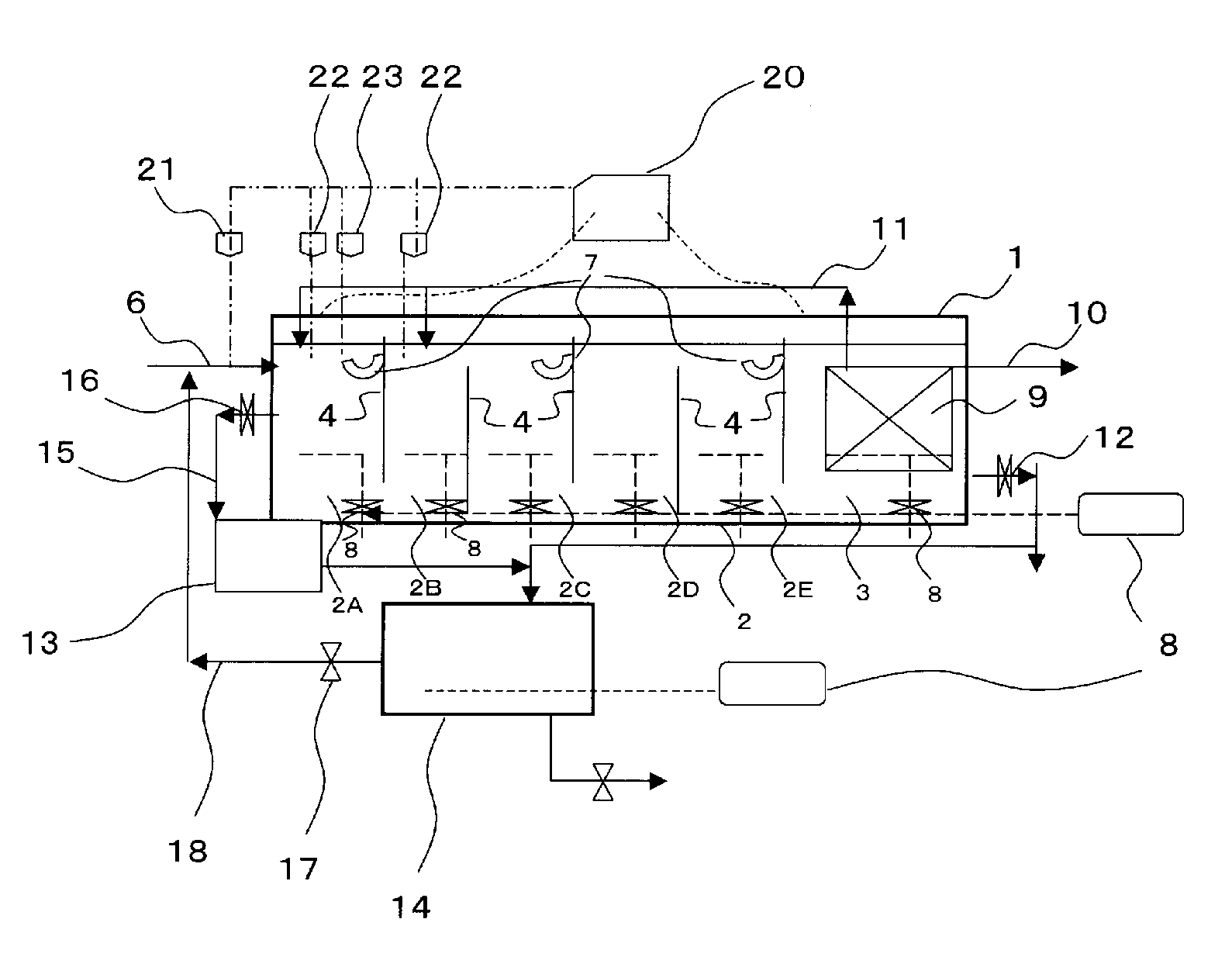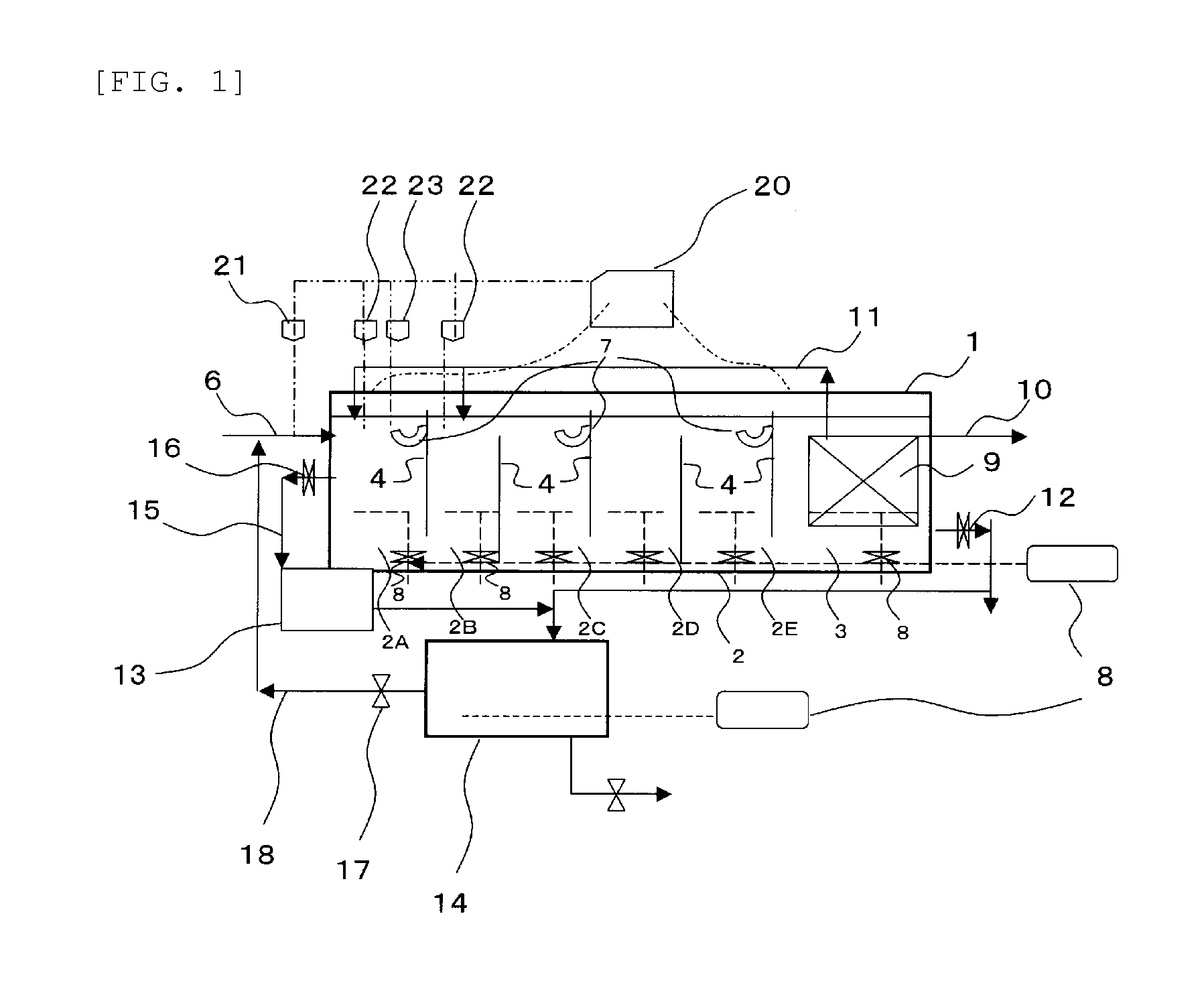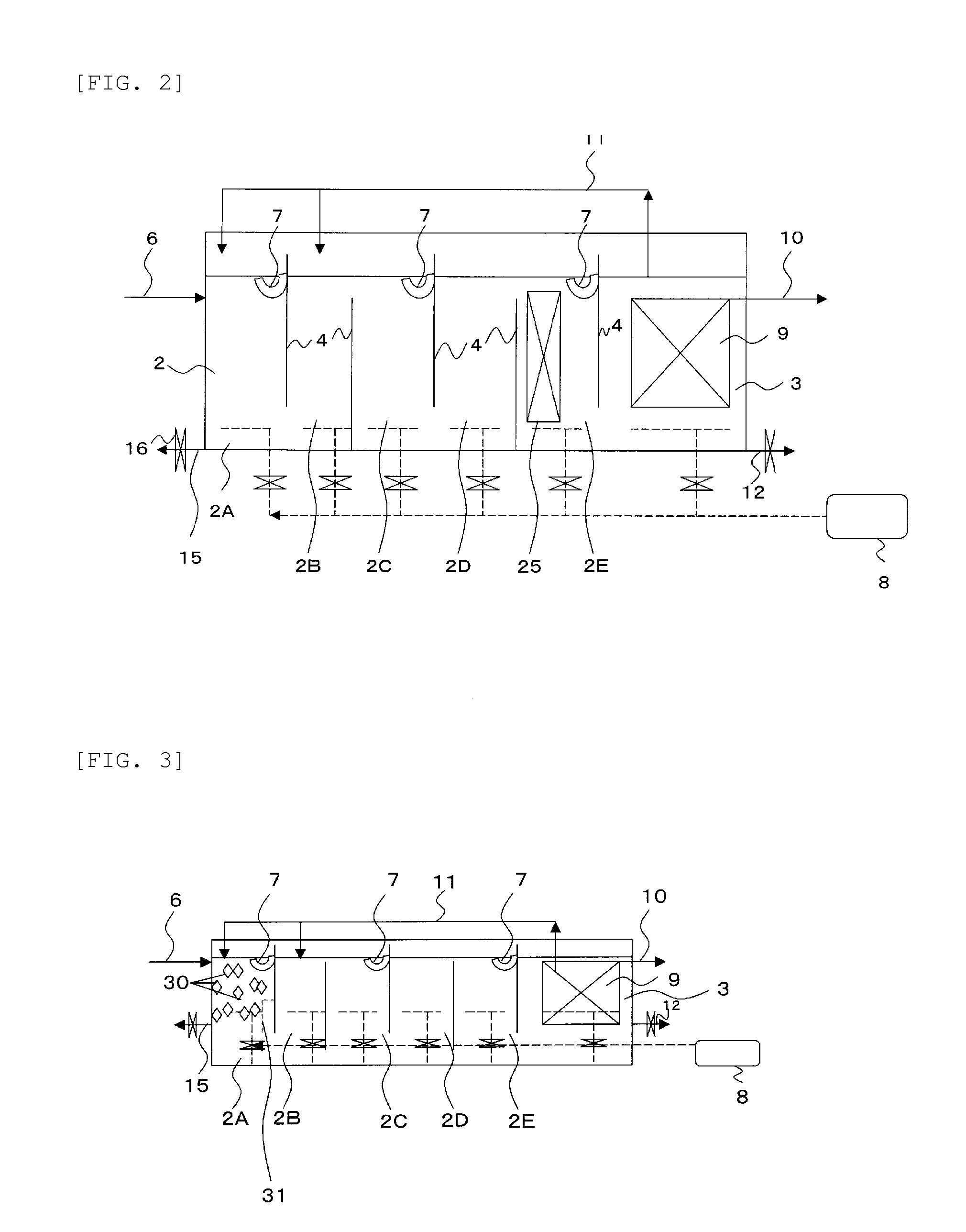Method and apparatus for treating oil containing wastewater
a technology of oil-containing waste water and treatment method, which is applied in biological water/sewage treatment, multi-stage water/sewage treatment, water treatment nature, etc., can solve the problems of insufficient water resources required for production, operation and management, and recycle generated oil-containing waste water, etc., to achieve stable operation, suppress the effect of the second reaction chamber and the following reaction chamber, and easy floatability
- Summary
- Abstract
- Description
- Claims
- Application Information
AI Technical Summary
Benefits of technology
Problems solved by technology
Method used
Image
Examples
second embodiment
[0143]FIG. 2 is a drawing which illustrates a variation of the waste water treatment apparatus illustrated in FIG. 1, characterized in that an adsorption carrier fixing part 25 is installed within the biological reaction chamber 2.
[0144]The adsorption carrier fixing part 25 is obtained by fixing and disposing a carrier capable of adsorbing hardly decomposing components.
[0145]Examples of the carrier capable of adsorbing hardly decomposing components include activated carbon, various plastic carriers, and sponge carriers. Among them, from the view point of easy adsorption of microorganisms, fibrous activated carbon and particle activated carbon are particularly preferable. Although it is not a carrier which selectively adsorbs hardly decomposing components, it may be any carrier if it can adsorb hardly decomposing components, and it is not limited to the above examples.
[0146]Further, as a means for fixing the carrier, it may be fixed by adding the carrier into a mesh basket. However, ...
third embodiment
[0150]FIG. 3 is a drawing for illustrating a variation of the waste water treatment apparatus illustrated in FIG. 1, and it is characterized in that a hydrophobic carrier 30 is added and floated in the first reaction chamber 2A and, as illustrated in FIG. 4, a screen 31 is installed at lower connection part between the first reaction chamber 2A and the second reaction chamber 2B.
[0151]Since the oil components flown with the waste water into the first reaction chamber 2A is adsorbed and concentrated by the hydrophobic carrier 30 and also decomposed by neighboring activated sludge, they are generally floating in much lower concentration state than the oil component adsorption capacity of the hydrophobic carrier 30. However, when concentration of the oil components is accidentally increased in the flow-in water, as they are adsorbed onto the hydrophobic carrier 30, the amount of the oil components flown into the second reaction chamber 2B can be suppressed. Once the concentration of th...
fourth embodiment
[0158]FIG. 5(1) and (2) are a drawing for illustrating a variation of the waste water treatment apparatus illustrated in FIG. 1, and it is characterized in that the first reaction chamber 32A and the second reaction chamber 32B that are divided by the partition 4, and also the reaction chambers 32C, 32D, 32E, 32F, and 32G at the downflow side and the separation membrane chamber 33 are not installed in a single row but installed in two rows after folding and overlapping, a distribution chamber 34 is installed between the separation membrane chamber 33 and the first reaction chamber 32A, a gate 35 is installed for connecting the separation membrane chamber 33 to the distribution chamber 34, a gate 36 is installed for connecting the distribution chamber 34 to the first reaction chamber 32A, and a gate 37 is installed for connecting the distribution chamber 34 to the second reaction chamber 32B.
[0159]The waste water flown into the first reaction chamber 32A flows, while moving as a flow...
PUM
| Property | Measurement | Unit |
|---|---|---|
| retention time | aaaaa | aaaaa |
| adsorption capacity | aaaaa | aaaaa |
| size | aaaaa | aaaaa |
Abstract
Description
Claims
Application Information
 Login to View More
Login to View More - R&D
- Intellectual Property
- Life Sciences
- Materials
- Tech Scout
- Unparalleled Data Quality
- Higher Quality Content
- 60% Fewer Hallucinations
Browse by: Latest US Patents, China's latest patents, Technical Efficacy Thesaurus, Application Domain, Technology Topic, Popular Technical Reports.
© 2025 PatSnap. All rights reserved.Legal|Privacy policy|Modern Slavery Act Transparency Statement|Sitemap|About US| Contact US: help@patsnap.com



